

Morocco, a unique land of infinite landscapes and a thousand colors. From the spirituality of the red city, Marrakech, to the lush oases of the Draa Valley, to the towering golden dunes of the Sahara Desert and even higher ones of Mount Toubkal, passing through villages and markets, other deserts, until reaching the blue of the ocean in Essaouira.
A journey that feels like a movie.
Here’s what to see, what not to miss, and where to stay for a dream experience.
Trip to Morocco: Itinerary and Tips
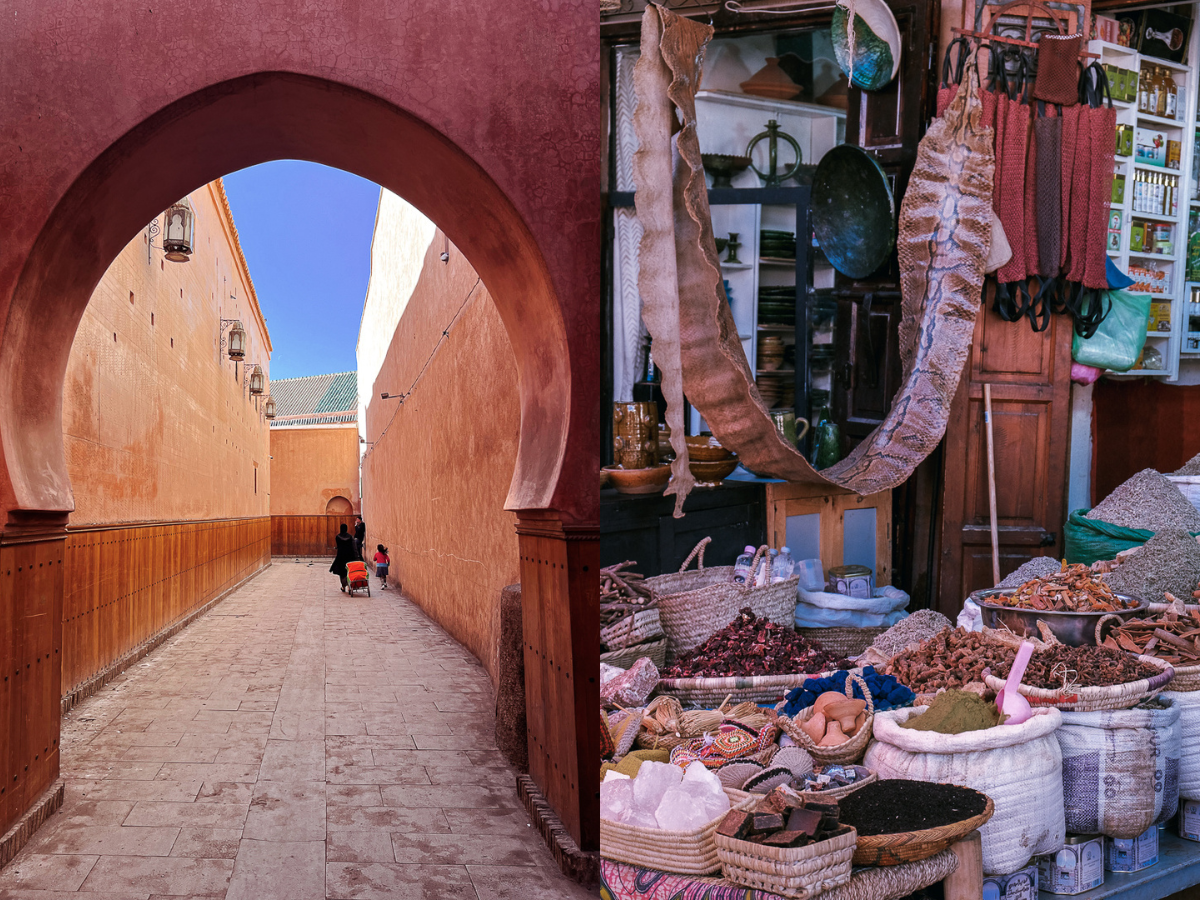
Ready, Set, Go: Marrakech
The red city, named for the color of its buildings and the warm light that illuminates its alleys and streets, tinging everything, even the heart, with indelible shades.
A city unlike any other, Marrakech is a series of strong sensations like the fragrant spices that color the Medina, the old quarter, the heart and soul of this city, with the Koutoubia Mosque, the sumptuous El Bahia Palace, the Ben Youssef Madrasa, and then the main attraction, the souk, the traditional market.
Spices, carpets, leather goods, jewelry, and kaftans are just some of the many wonders for sale in this magical labyrinth.
Here, there’s only one rule: get lost and enjoy the life that flows irrepressibly like the “Kesh angels,” the female motorcyclists immortalized by the photographer Hassan Hajjaj (you’ll find his works in his space “Jajjah”).
Among a thousand perfumes, voices, and colors, every street leads as if by magic to the symbolic place of the city, Jamaa el Fna square. Impossible to describe, entirely to be experienced, especially from above, from one of the many terraces that surround it.
 Not to be missed:
Not to be missed:

Don’t forget these spots:
LRNCE showroom showcases the modern ceramic and fabric line by Laurence Leenaert. The tradition of materials blends with innovation, creating unique and spontaneous pieces like this project.
Jardin Majorelle is now a symbol of the city, an enchanted Eden where the greenery of vegetation merges with the blue (majorelle) of the stunning Islamic architecture. With a single ticket, it’s worth visiting the Yves Saint Laurent Museum just a short walk away.
Amal Women’s Training Center is a non-profit association, managed by women only, where you can taste typical dishes or learn to cook them through one of the many cooking classes. All proceeds support women’s employment.
Riad Berbère is an enchanted oasis where you can enjoy a romantic candlelit dinner by the fireplace or on the terrace. You can also stay in the very elegant rooms.

Where to stay:
The riad (in Arabic ‘gardens’) are ancient Moroccan multi-story homes with rooms overlooking a central courtyard, often featuring a pool or fountain. Protected by thick walls, they conceal a calm and secret world, an oasis of peace and silence to retreat to after a day immersed in the fast-paced life outside.

Riad 72: A home away from home, with a warm welcome as vibrant as its interiors that blend luxury and Moroccan tradition with touches of contemporary design, in a fusion of eras and influences in true “Marrakech” style.
Not to be missed: the sunset from the terrace pool (one of the highest in the city).


Maison Brummel: A “hidden” gem recently opened right next to the famous Jardin Majorelle. Only eight rooms overlook a lush garden where palm trees reflect off the pink walls. A boutique house that will be hard to leave.

 A UNESCO World Heritage Site, this fortified city (famous as the filming location for Gladiator) hides from view thanks to its earthy colors blending with the rock, only to strike once its heart is reached, with its boundless vistas and hospitality as warm as the famous mint tea, a faithful companion on this journey.
A UNESCO World Heritage Site, this fortified city (famous as the filming location for Gladiator) hides from view thanks to its earthy colors blending with the rock, only to strike once its heart is reached, with its boundless vistas and hospitality as warm as the famous mint tea, a faithful companion on this journey.
It’s a day on the road, where the world unfolds outside the window in a mystical experience.
Lunar landscapes, Berber villages blending into the rocks, camels, date sellers, and then there she is, Mother Nature, in all her power and irreverence shaping the Dades Gorges: a serpent of curves and hairpin bends winding harsh and rugged up to the summit.
 After the ascent comes the descent, and the landscape changes again and again until the first timid dunes of Merzouga appear, heralding the appearance of the main protagonist, the Sahara Desert.
After the ascent comes the descent, and the landscape changes again and again until the first timid dunes of Merzouga appear, heralding the appearance of the main protagonist, the Sahara Desert.
After many kilometers adorned with villages, markets, pottery vendors, and carpets, the desert gives way to lush palm groves, set against imposing mountains with a reddish hue: it’s not a mirage, it’s all real.
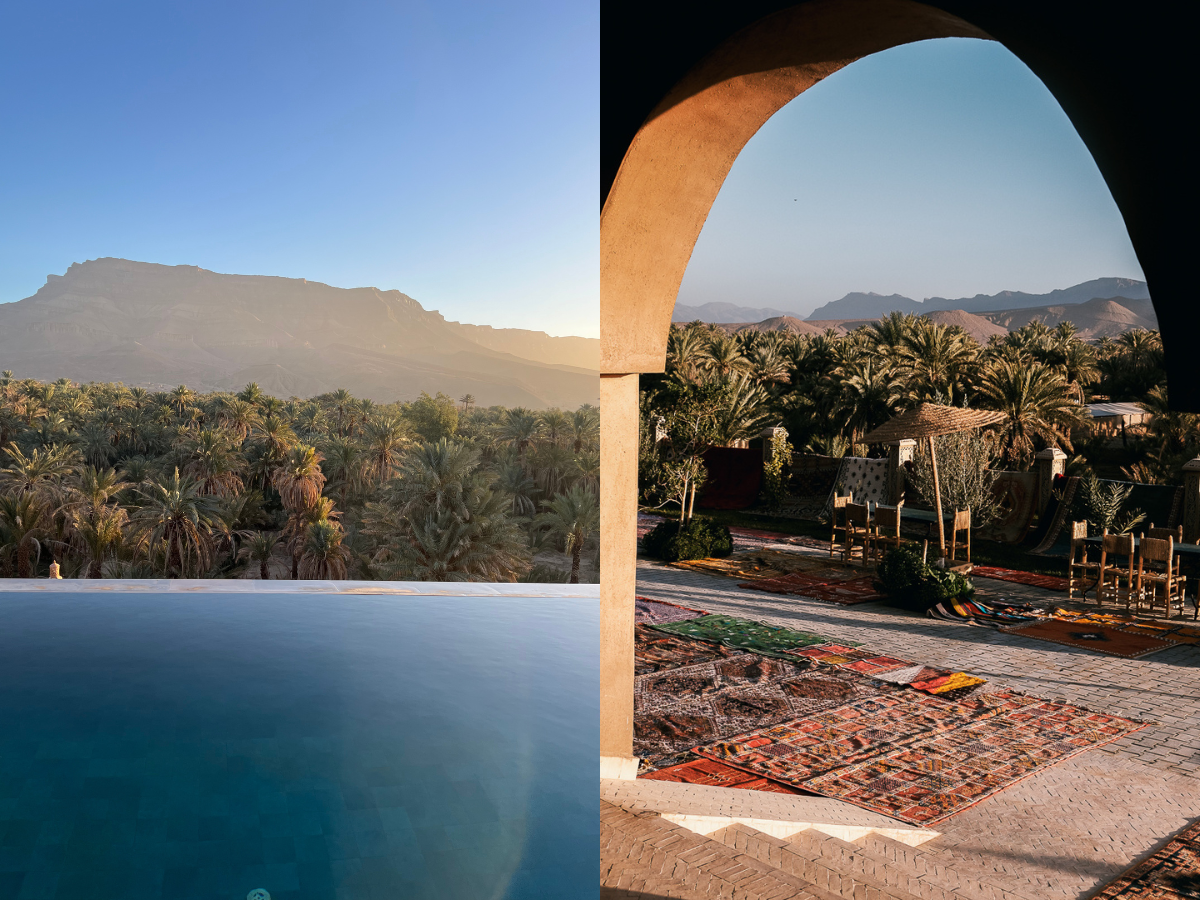
Where to Stay:
Kasbah Hnini: Even Aladdin would have struggled to choose his own carpet among the vast array of shapes and colors that steal the heart as soon as you step through the door of this kasbah, one of the many that makes this valley known as the “Valley of a Thousand Kasbahs.” A fortified palace, adorned with carpets, illuminated by lanterns and candles, and surrounded by a sea of palms.
 From the Draa Valley to Mount Toubkal
From the Draa Valley to Mount Toubkal
From the desert to the palm trees, it’s time for rivers and waterfalls: the Ourika Valley. The sound of the river, which acts as a “patio” for the colorful restaurants serving directly on the water, provides the soundtrack to yet another change of scenery in this live-action film. Perfect for a lunch break (or a night) before heading up towards the highest peak in North Africa: Mount Toubkal.
As you ascend towards the mountain, you encounter the villages most affected by the earthquake of September 2023, still bearing the signs of destruction but continuing to be home to many Berber families and hosting unique realities like the Kasbah du Toubkal.
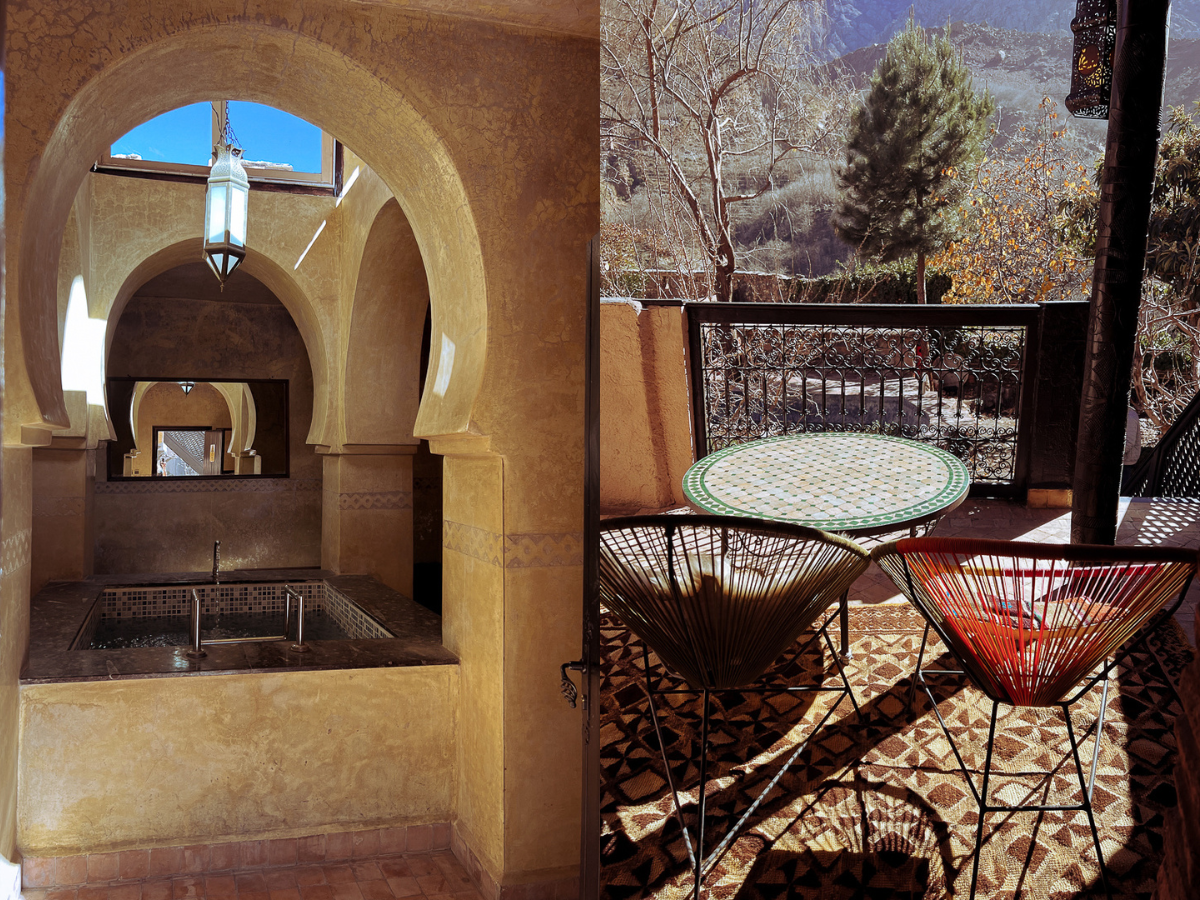 Kasbah du Toubkal: A magical and untouched refuge at the foot of the tallest mountain in North Africa (4,167 meters), surrounded by mountains and blue skies.
Kasbah du Toubkal: A magical and untouched refuge at the foot of the tallest mountain in North Africa (4,167 meters), surrounded by mountains and blue skies.
A terrace for sunny lunches, a room with a 360-degree view heated by the fireplace and the stories of travelers who animate this enchanted place, which has always been committed to supporting the local community and has initiated the “education for all” project to enable girls to access education, often denied to them.
Not to be missed: a relaxing break in the hammam after a day of trekking in the mountains or exploring the Berber village of Imlil.
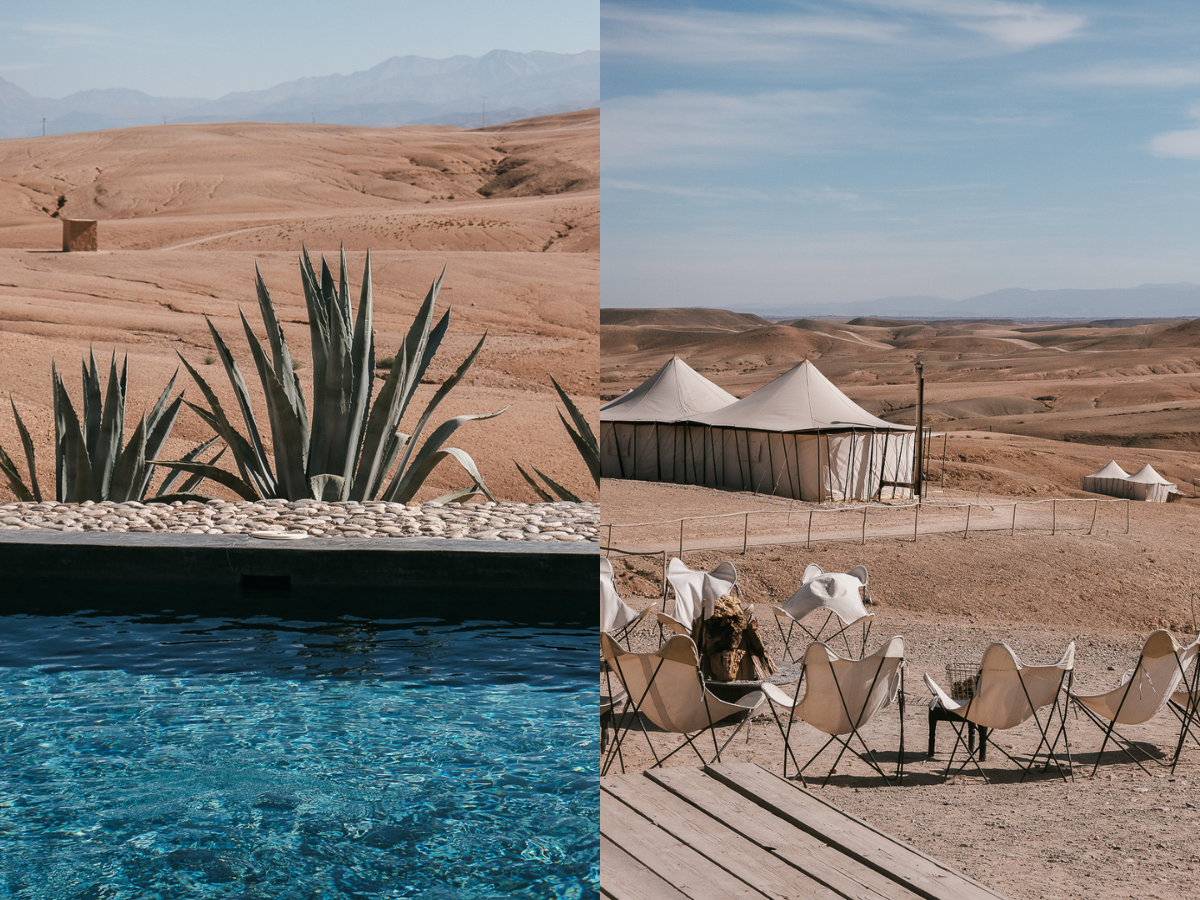 Desert 2: Agafay
Desert 2: Agafay
Another day, another desert: Agafay. Not too far from Marrakech, this desert can be a viable alternative for those who don’t have the time to reach Merzouga. Forget about the dunes and sand of the Sahara, this expanse of red rock will catapult you straight to the moon. Vast and illuminated by a light without shadows, here you can’t even hide from yourself.
Where to Stay
Scarabeo Camp: White tents (equipped with every comfort) surrounded by an endless expanse of rock, a pool reflecting a light as intense as this place, and distant and undefined horizons. For an unforgettable stay.
Not to be missed: the sunset warmed by the fire and then dinner consisting of traditional dishes illuminated exclusively by candles and accompanied by Berber songs. It’s practically like being in a mirage.
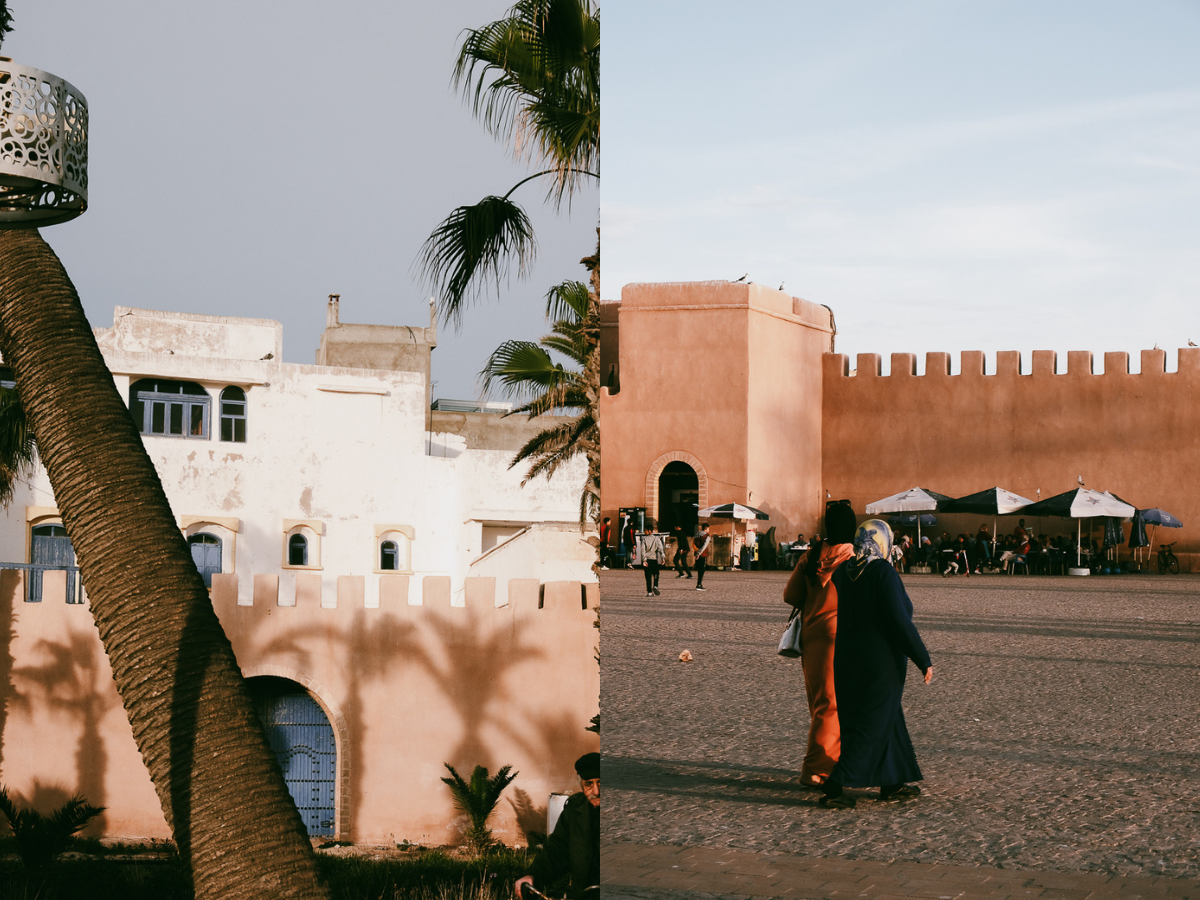 From the Desert to the Ocean: Essaouira
From the Desert to the Ocean: Essaouira
And then there, the blue painted blue with the scent of the sea and the concert of seagulls (and more).
A small fortified city, “The Pearl of the Atlantic” with its narrow alleys filled with beauty, picturesque squares, blue boats, and bright light, has attracted painters, sculptors, and artists over the years.
A mythical destination, which since the 1960s has hosted hippie communities and musicians from around the world, including Jimi Hendrix, and which still remains a crossroads of life and creativity.
Here today, the Gnaoua music of African tradition (sub-Saharan) merges with jazz, rock, and elements of other cultures, giving rise to a universe of hypnotic contaminations that find space in the many venues scattered throughout the streets of the Medina and culminate in the Gnaoua Music Festival held every year.
 Not to Be Missed:
Not to Be Missed:
Souk: Here, the market inside the marvelous Medina by the sea (listed as a UNESCO World Heritage Site) does not disappoint. It’s smaller and more relaxing than that of Marrakech but equally colorful and exciting.
Les Real Mogador: An art gallery inside the palace that once housed the Italian consulate, hosting modern art by national and international artists.
Café Berber: A tiny restaurant (four tables) run by a local family, offering a limited menu based on the availability of the day for an authentic and exquisite lunch or dinner.
The Loft: A bar, gallery, restaurant, but above all, a rooftop. A colorful terrace with a 360-degree view of the ocean and Medina. Live music in the evening.
Old Port: To watch the typical blue boats return from a day of fishing, announced by the seagulls’ song, and enjoy a grilled sardine meal freshly caught and cooked directly by the fishermen.
 Where to Stay:
Where to Stay:
Salut Maroc: A dive into the colors of Morocco, of its zellige tiles (typical tiles of this land) of every shape and color, rooms that tell stories of fantastic journeys, and a terrace overlooking the ocean that makes you feel like you’re on a magical colorful boat ready to set sail for new adventures and encapsulates the kaleidoscope of emotions of this magical land.
Hypnotic, like the music of Essaouira, this riad is music for the eyes, and more, as artists and musicians of all genres perform on the terrace every week (you can access the rooftop restaurant even without staying at the riad).
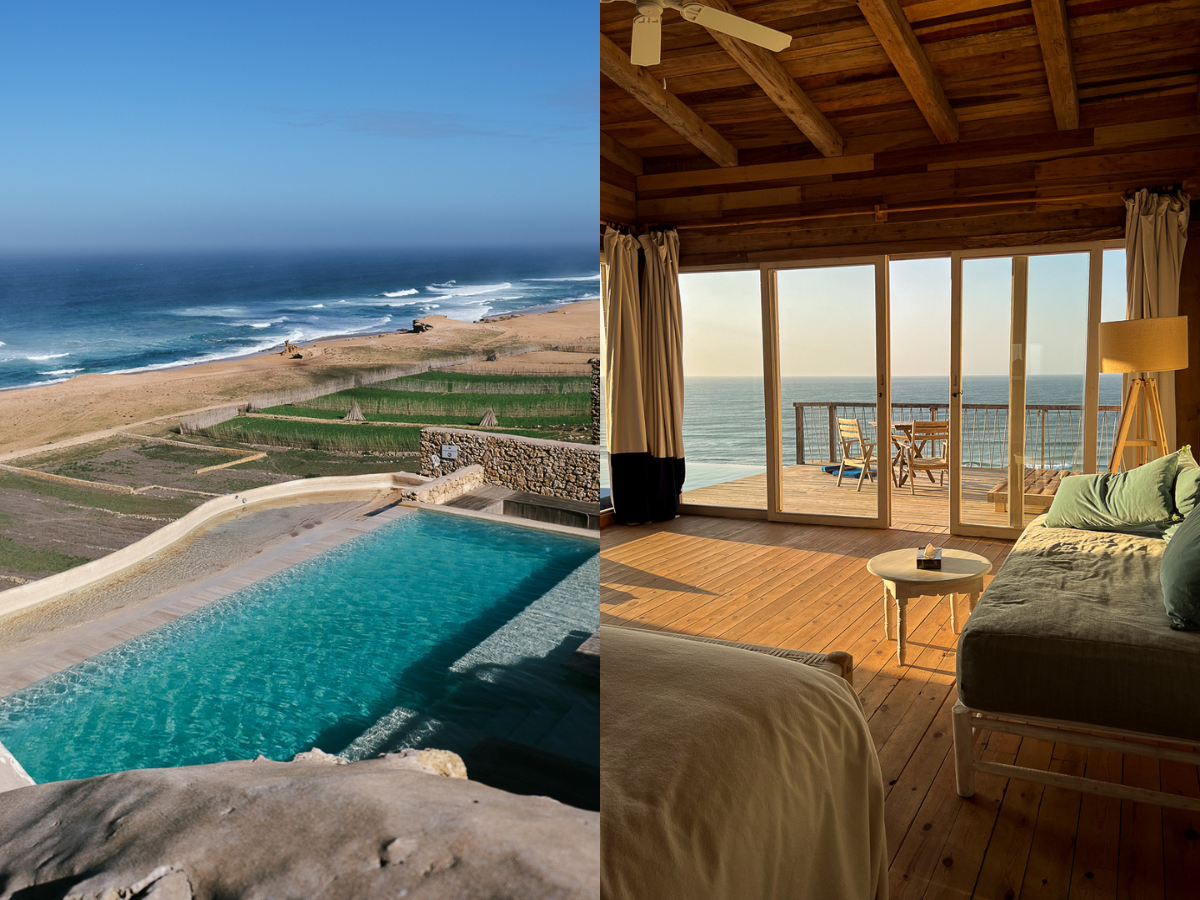 The Atlantic Coast: Oualidia
The Atlantic Coast: Oualidia
New scene, same ocean. Continuing along the coastal road, the cliffs rise high and rugged until reaching one of the most famous beaches in Morocco: El Beddouza.
Far from the city, here the soundtrack is entrusted to the waves. A stretch of golden sand, a regenerating silence to gather emotions and find the strength to leave this country and its thousand “faces”.
Where to Stay
Azyar Ocean Lodge: an eco-lodge suspended over the Atlantic Ocean, where the minimal elegance of the interiors blends with the beauty of nature. The blue of the water merges with that of the sky for a total and rejuvenating immersion. The infinity pool overlooking the coean is a massive plus.
New Year, New You, New Horizon: 2024 Travel Destinations Aligned with Your Star Signs
This article first appeared on Grazia.it -Author: Sara Reverberi








 Then it’s off to the Valley of Roses, an oasis of peace where even the sky takes on a pink hue in honor of its name. Sublime panoramas await, with arid landscapes made up of ochre and pink rocks and mountains alternating with palm groves and rose gardens.
Then it’s off to the Valley of Roses, an oasis of peace where even the sky takes on a pink hue in honor of its name. Sublime panoramas await, with arid landscapes made up of ochre and pink rocks and mountains alternating with palm groves and rose gardens. From the Valley of Roses to the Desert:
From the Valley of Roses to the Desert:
 From the Desert to the Oasis: the Draa Valley
From the Desert to the Oasis: the Draa Valley




